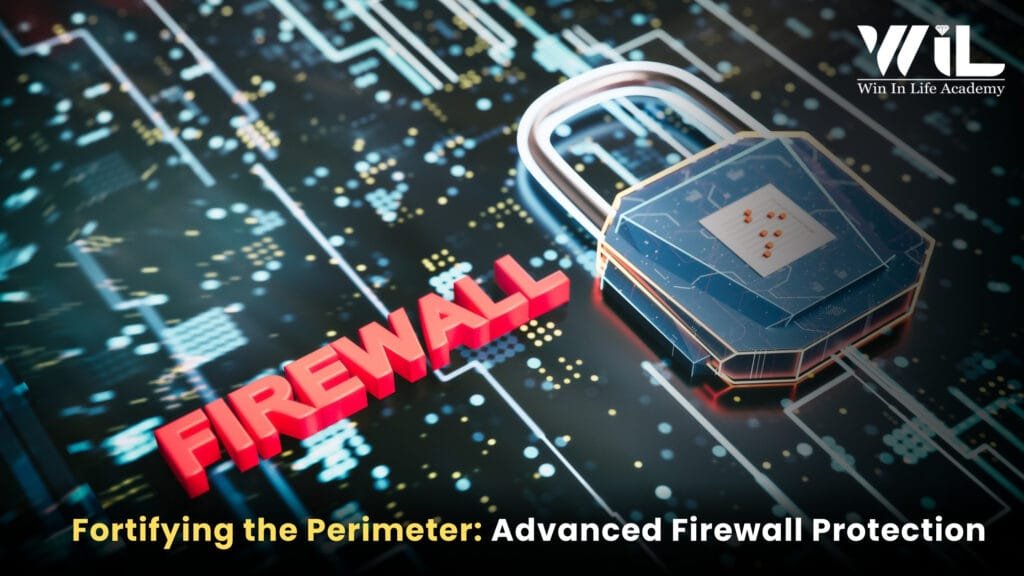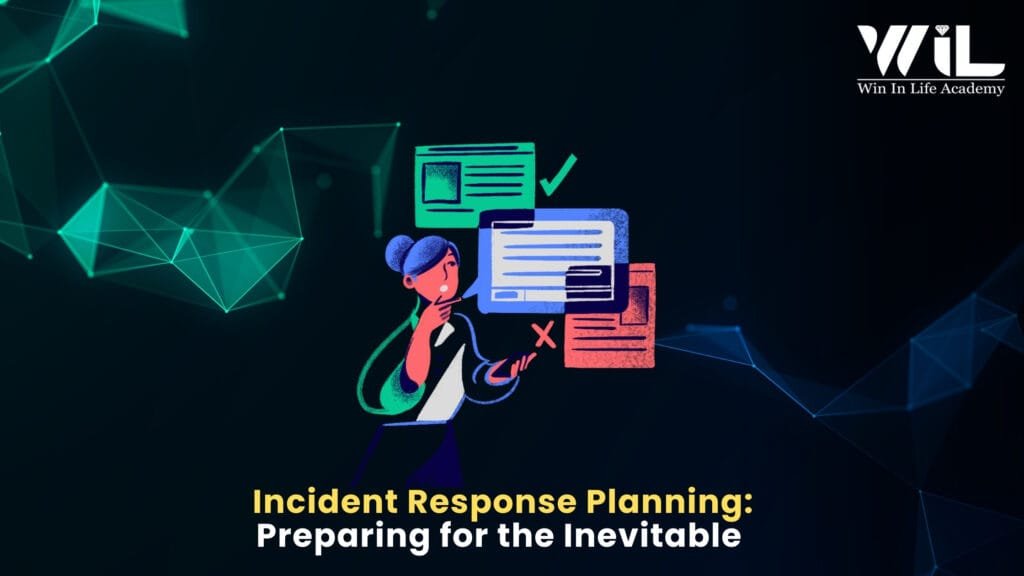Introduction
The digital age, while fostering unprecedented connectivity, has also assisting in a relentless wave of sophisticated cyberattacks. In this environment, strong network security strategies are no longer optional; they are the bedrock of organizational resilience. The ever-evolving landscape of cybersecurity threats demands a proactive and multi-layered defense. This discussion will delve into five essential network security strategies crucial for mitigating the risk of harmful breaches.
The Evolving Threat Landscape: A Call for Advanced Security
The threat landscape is in a state of constant flux. Attackers continually refine their techniques, leveraging advanced technologies to bypass traditional security measures. The expansion of attack surfaces, fueled by the increase of cloud computing, IoT devices, and remote work, has created numerous vulnerabilities. The surge in ransomware attacks and the increasing regulatory scrutiny surrounding data breach prevention underscore the urgent need for comprehensive network security strategies. The interconnected nature of modern business means that a single point of failure can lead to cascading consequences, affecting not just the breached organization but also its partners and customers.
5 Essential Network Security Strategies
Fortifying the Perimeter: Advanced Firewall Protection

Let’s begin with fortifying the perimeter. The firewall remains a fundamental component of network security, but modern threats necessitate advanced firewall protection. Traditional firewalls are simply not enough. Next-Generation Firewalls, or NGFWs, offer deep packet inspection and application control, providing a much more granular level of security. Web Application Firewalls, or WAFs, are essential for protecting web applications from common attacks like SQL injection. It is also important to remember that regular updates and network segmentation enhance firewall effectiveness.
Integrating intrusion prevention systems with firewalls further strengthens perimeter defense. Advanced firewalls are the initial line of defense, but they must be continuously updated and configured to remain effective against evolving threats. The importance of a well-configured firewall cannot be overstated, as it acts as the first line of defense against external threats. A properly implemented firewall can prevent unauthorized access, block malicious traffic, and control network traffic based on predefined security policies.
By 2029, the global perimeter security market size is projected to grow from 81.4 US billion dollars to 114.2 US billion dollars, at a Compound Annual Growth Rate (CAGR) of 7.0%.
Proactive Threat Detection: Implementing Network Intrusion Detection Systems (IDS)
Beyond perimeter security, continuous monitoring is crucial. This is where implementing network intrusion detection systems, or IDS, becomes vital. Proactive threat detection is necessary. Signature-based IDS identifies known threats by comparing traffic to attack signatures, while anomaly-based IDS detects deviations from normal network behavior, uncovering potential zero-day attacks. Host-based and network-based IDS provide different perspectives on security events.
Integrating these systems with a Security Information and Event Management, or SIEM, platform centralizes logging and analysis for faster threat response. IDS systems are vital for detecting malicious activity that bypasses perimeter defenses, enabling timely intervention. These tools provide real-time visibility into network traffic, allowing security teams to identify and respond to threats before they cause significant damage. The ability to detect anomalies and identify potential threats is crucial in today’s threat landscape.
Global forecast projected the market value of Intrusion Detection Systems (IDS) from 5.7 US billion dollars in 2024 to 11.4 US billion dollars in 2034 at a CAGR (2025-2034) of 7.3%.
Data Protection and Encryption: Safeguarding Sensitive Information

Data is the lifeblood of modern organizations, making strong data protection and encryption essential for data breach prevention. Encryption at rest and in transit protects data from unauthorized access, even if intercepted. Implementing access control and the principle of least privilege limits access to sensitive data, reducing the risk of internal breaches. Data loss prevention, or DLP, solutions prevent unauthorized data transfer, both internally and externally. Regular data backups ensure data recovery in case of breaches or disasters.
Tokenization and masking protect sensitive data in environments handling customer information. Data protection measures are crucial for maintaining confidentiality, integrity, and availability of critical information. The increasing complexity of data environments, with data stored in various locations, including on-premises servers, cloud platforms, and mobile devices, requires a comprehensive approach to data protection.
In 2025, the projected revenue of the data security market is expected to reach 8.01 billion U.S. dollars worldwide.
Security Awareness Training: Empowering Employees as the First Line of Defense
Employees are often the weakest link in the security chain, making security awareness training a critical component of network security strategies. Phishing awareness training educates employees on recognizing and avoiding phishing attacks. Password security education promotes strong password practices and multi-factor authentication. Social engineering awareness trains employees to recognize and avoid manipulation tactics. Encouraging prompt reporting of suspicious activities is also important.
Regular training updates keep employees informed about the latest threats and best practices. Security awareness training empowers employees to become active participants in the organization’s security posture. Human error is a significant factor in many security breaches, and a well-trained workforce can act as a crucial line of defense. Regular training sessions, simulations, and awareness campaigns can help employees understand their role in protecting the organization’s data.
Enroll now: Cybersecurity Course
Incident Response Planning: Preparing for the Inevitable

Even with robust defenses, breaches can occur. Therefore, a well-defined incident response plan is essential for minimizing the impact of breaches. Establishing an incident response team with clear roles and responsibilities is a must. Developing a comprehensive incident response plan that outlines steps for responding to various security incidents is crucial. Regular incident response drills test and improve the effectiveness of the plan.
Conducting a thorough post-incident analysis identifies lessons learned and areas for improvement. A clear communication plan ensures timely and transparent communication with stakeholders. Incident response planning ensures that organizations can effectively manage and recover from security incidents. A well-prepared incident response plan can help organizations minimize downtime, reduce financial losses, and maintain customer trust in the event of a security breach.
Read our recent blog post on The Ultimate 5-Step Guide: Mastering Ethical Hacking Techniques for Security
Conclusion: Building a Resilient Network Security Posture
In conclusion, defending against modern cybersecurity threats requires a comprehensive and proactive approach to network security strategies. By implementing advanced firewall protection, proactive network intrusion detection, robust data protection, comprehensive security awareness training, and effective incident response planning, organizations can significantly strengthen their defenses. Continuous monitoring, assessment, and improvement are essential for maintaining a resilient network security posture. By staying vigilant and adapting to the ever-changing threat landscape, organizations can safeguard their critical assets, maintain the trust of their customers, and minimize the risk of a data breach prevention failure.
To further enhance your cybersecurity knowledge and skills, and to develop a holistic approach to personal and professional growth, consider exploring the comprehensive courses offered by Win in Life Academy to learn how you can empower yourself and your organization to thrive in today’s digital world.
Frequently Asked Questions
- Why are traditional firewalls no longer sufficient for modern network security?
Traditional firewalls primarily filter traffic based on ports and protocols. Modern cyberattacks are more sophisticated, often using application-layer vulnerabilities and advanced techniques to bypass these basic filters. Next-Generation Firewalls (NGFWs) offer deeper inspection, application control, and intrusion prevention, providing a more comprehensive defense against today’s complex threats. - What is the difference between signature-based and anomaly-based Network Intrusion Detection Systems (IDS)?
Signature-based IDS detect known attack patterns by comparing network traffic to a database of predefined signatures. Anomaly-based IDS, on the other hand, establish a baseline of normal network behavior and flag any deviations from that baseline. Signature-based IDS are effective against known threats, while anomaly-based IDS can detect unknown or zero-day attacks. - How can security awareness training help prevent data breaches?
Security awareness training educates employees about common cybersecurity threats, such as phishing and social engineering. By understanding these threats and learning how to identify and avoid them, employees become a crucial first line of defense. Training also promotes good security practices, such as strong password management and prompt reporting of suspicious activities, reducing the risk of human error leading to data breaches. - What is the importance of having an incident response plan in place?
An incident response plan outlines the steps an organization should take in the event of a security breach. It helps to minimize the impact of the breach by ensuring a coordinated and efficient response. A well-defined plan includes procedures for containment, eradication, recovery, and post-incident analysis, allowing organizations to quickly restore operations and learn from the incident to improve future security. - How does data encryption contribute to data breach prevention?
Data encryption transforms data into an unreadable format, making it inaccessible to unauthorized users. Encrypting data both at rest (stored data) and in transit (data being transmitted) ensures that even if a breach occurs and data is intercepted, it remains protected. Encryption safeguards sensitive information, maintaining confidentiality and reducing the risk of data exposure.
Reference Links:
- National Institute of Standards and Technology (NIST) Cybersecurity Framework: https://www.nist.gov/cyberframework
- Cybersecurity and Infrastructure Security Agency (CISA): https://www.cisa.gov/
- OWASP (Open Web Application Security Project): https://owasp.org/
- SANS Institute: https://www.sans.org/
- European Union Agency for Cybersecurity (ENISA): https://www.enisa.europa.eu/





